Types and varieties of rose hips
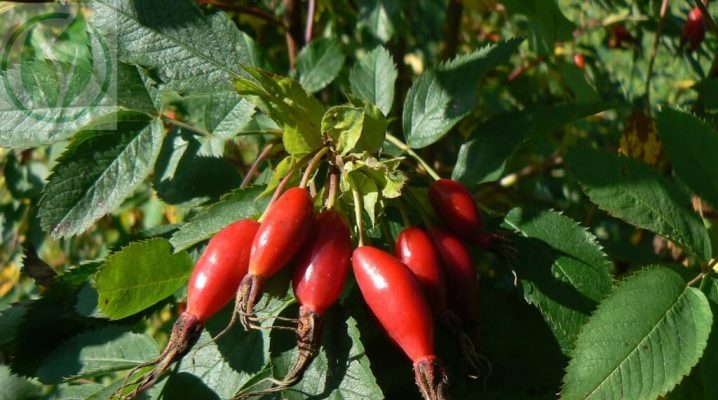
The species and varieties of rose hips can be found in the order Rosaceae or in the Rosaceae family. Its cultural forms are commonly referred to as roses, sometimes the rosehip is also called so. The number of species of this picturesque plant is debated in the scientific literature - according to various sources, there are from 300 to 500 species. On the territory of Russia, there are officially about 100 endemics, of which only the May rosehip is recognized as the most widespread and of industrial importance.
Its fruits are used in folk medicine and pharmaceuticals, for the manufacture of medicines.
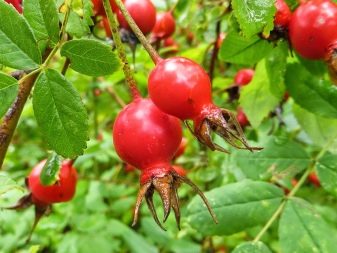
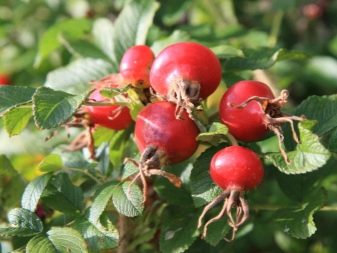
Femoral rosehip and its description
Thorny, with its many synonyms: colloquial and scientific, is found in China, Europe, North and South-West Asia, Russian Siberia. A widespread endemic of Central Europe and Asia - a bush that grows under favorable conditions up to 2 m in height. In England, on the dunes and in the subalpine zone - up to 75 cm. This term now means 2 species, previously differentiated. The main principle of differentiation was considered to be the hairs on the peduncle.

However, molecular studies have revealed their common origin, although one of the varieties is more widespread, and the second - less prickly - grows only in China and Siberia. The prickly rose hip is considered an earlier, priority species. He and his fellow are not so "armed" - they are natural species. Therefore, the description contains some variability of features:
- thorns of various configurations and lengths: from thin and straight to widened at the base - they are small or even longer than large leaves;
- leaves with 3, 5 or 7 leaflets on stipules, naked and "armed", multi-toothed, from oval to obtuse-angled, different colors on the back and front sides (light and dark green);
- flowers are single, of different diameters, smooth or slightly pubescent;
- corollas 2 to 5 cm in diameter, usually white or milky, with large petals;
- fruits can be up to 1.5 cm long, with a little more in width.
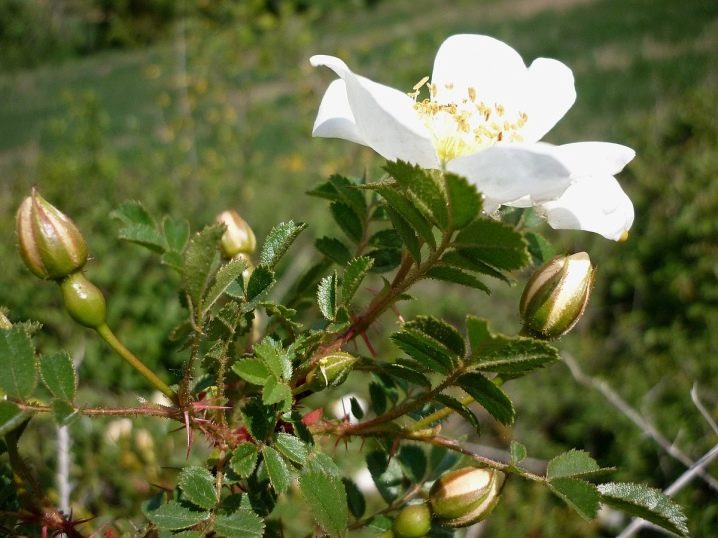
It was the priority species that became the progenitor of many garden roses, known for half a century. The cultivation of the femoral species is carried out for decorative and protective purposes (creating a hedge, zoning). Obtaining fruits is possible from the age of 5. It is completely winter hardy and almost 100% viable plant. Growing from seed, however, is only a quarter of the number of attempts made, while vegetative methods are 92% successful. Additional bonuses - a delicious and strong aroma during flowering, high resistance to diseases that are prone to roses.
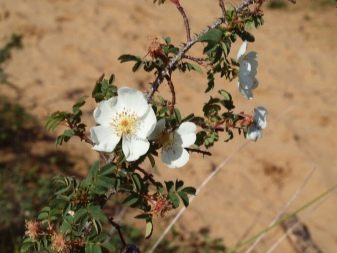
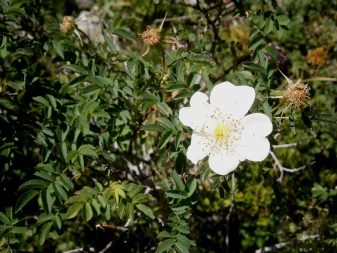
Features of daurian rosehip
Shrub reaching a height of one and a half meters. Its distinguishing feature is its increased resistance to cold climates. It is found in Transbaikalia, Primorye, Amur region, Japan and China. But this is only part of the range - the shrub can grow even to the Arctic, it is found on the European and North American continents, in Mongolia, Manchuria, Dauria (hence the name). Dauria is a toponym that explorers from Russia gave to parts of modern Buryatia, Transbaikalia, the Amur region and the western Amur region.
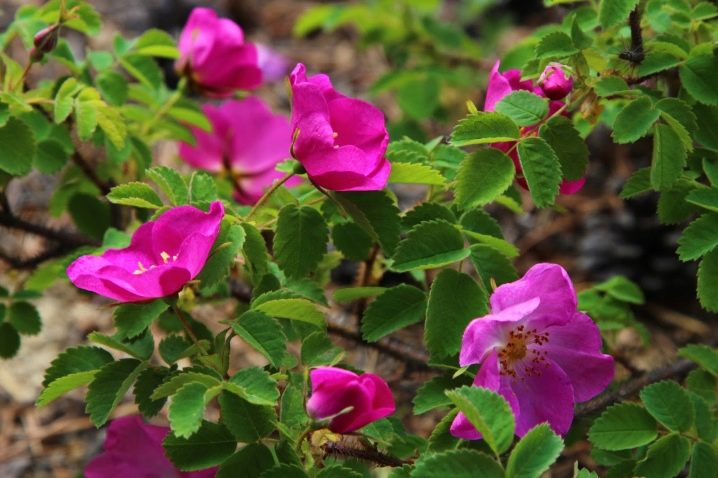
The second name is Daurian rose, which easily forms hybrids with spiny rose hips. Botanical descriptions certainly indicate similarities with two other species: May and drooping. However, in addition to the distribution area, other distinctive features can be noted:
- on the leaves of 7 pubescent leaves;
- flowers are large, up to 4 cm, pink, with five petals, back oval;
- the fruit reaches one and a half cm, may be in the form of a ball or egg;
- it is considered the richest in terms of the content of useful components: in dry fruits there are almost 3% vitamin C, ascorbic acid, 5 other vitamins, saponins and flavonoids;
- the plant perfectly tolerates cold and hot weather, but has an extremely negative attitude to droughts;
- in the plots bred as a melliferous plant with a large amount of pollen;
- used for medicinal purposes and as a decorative culture.
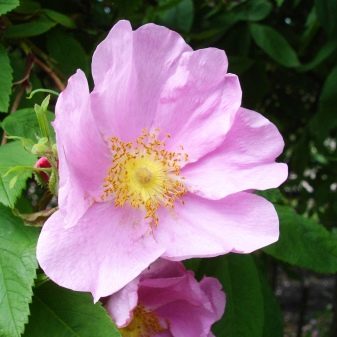
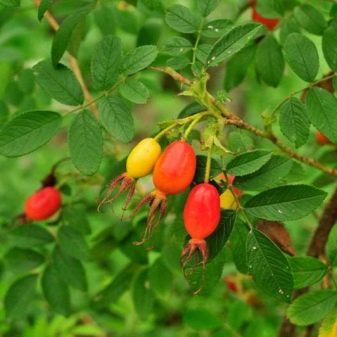
Recommended for beekeepers to get bee bread, you can cook compotes, brew teas and infusions to treat and strengthen the immune system. A subtle, strong, unique scent when blooming is just an added bonus.
Endurance, decorativeness, ease of vegetative propagation and harvesting of fruits - these are the arguments in favor of acquiring a Daurian rosehip, one of the 7 species of this culture growing in the Amur and Primorye regions.
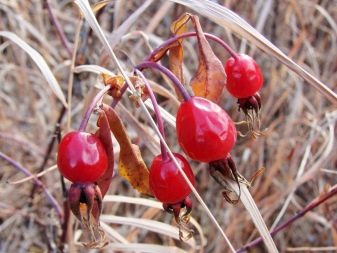
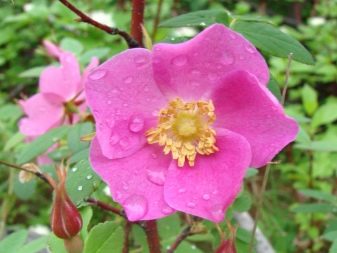
Other varieties
The types of rose hips are varied. Some of them are obtained by breeders, adapted for planting from the wild, hybridized by cross-pollination:
- wild varieties are cold-resistant, but the berries are wrinkled;
- daurian and spiny are suitable for collecting fruits for medicinal purposes;
- decorative pink is a common name for numerous types of shrubs, the best of them are terry, in addition to red and white, there is also yellow;
- Vorontsovskiy-3 is considered especially useful for the immune system: it contains up to 4.4 thousand mg of ascorbic acid;
- for the Moscow region, May is optimal - the most common species, endemic to the territory, but you can also grow varietal;
- the heat-loving "Xanthina" is not suitable for the Moscow region, but there are other varieties that grow in this region: "Globus", "Rumyany", "Shpil" and Daursky;
- multi-flowered, with climbing branches - garden shrub for gazebos, trellises and arches with white and pink flowers.
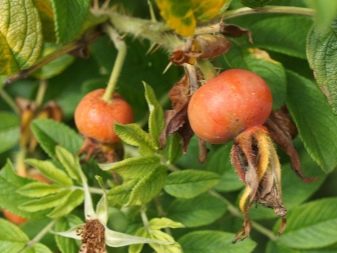
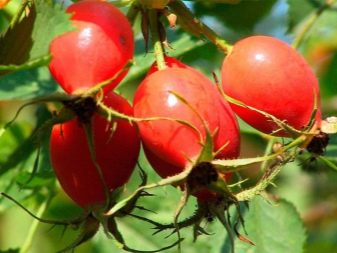
The efforts of breeders open up a wide range of species suitable for breeding for various purposes for the gardener and landscape designer. With thorns for hedges and without thorns, undersized, tall and with creeping branches, decorative varieties with large fruits, rich in vitamins, multi-colored and terry, exotic thermophilic, recognized throughout the world as masterpieces of selection - all these are rose hips that fully deserve their own the second name is rose.
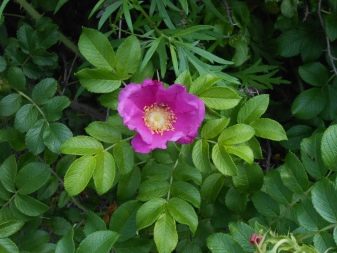
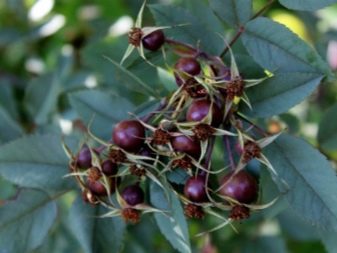
Spiny
Received the name because of the thin thorns, located in abundance on the stems. The flowers are reddish or pink. They are quite large, reaching up to 5 cm in diameter, can be located singly or in several pieces (rarely). Intense flowering in early summer, fruit ripening in September. This variety perfectly tolerates shade and winter cold, the fruits are rich in vitamins, macro- and microelements, active natural compounds.
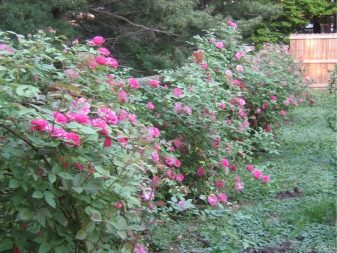
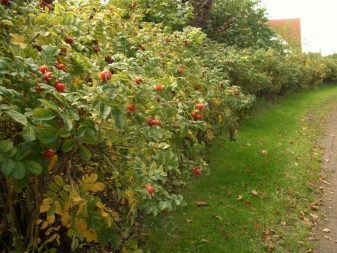
Can be used to form hedges and for scion.
May
The second name is cinnamon: because of the delicate aroma during flowering. Endemic for the middle lane, the fruits are filled with vitamin C and are used in food and medicine. Cold resistance and ease of maintenance made it a permanent element of urban landscaping. Large flowers, single, paired or tripled, can be seen in May and July (depending on the region and weather). By resorting to vegetative reproduction, you can quickly get fruits and flowering, select magnificent mother bushes for further reproduction.
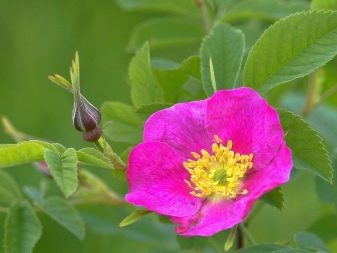
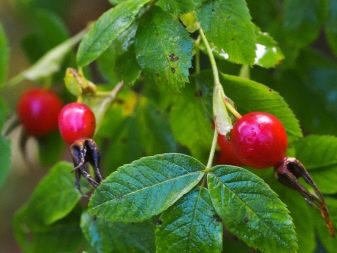
Wrinkly
This variety is invariably popular with flower growers and is widely used in landscape design. After flowering, the leaves acquire a reddish tint, their slight wrinkling adds decorativeness to the bushes, ennobles the landscape even without flowering. During this period, the bush reaches a height of 2 m.It is covered with single flowers of white, pink or purple with a violet hue. They can be arranged in 2-3 inflorescences. Alba (white) can be used to reinforce slopes or creeping slopes. Hansa (with a rich and spicy aroma) is a hybrid with light green leaves.
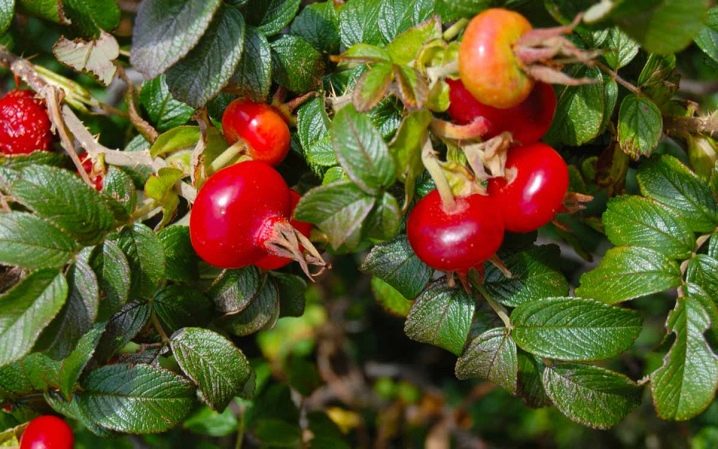
It is frost-resistant and not affected by fungi, and also takes root equally successfully on sandy and clay soils.
Gray
Known as the blue rose, it is a beautiful shrub that grows up to 3 m in height with complex, pinnate leaves. The leaves, stipules and branches are covered with a bluish or blue bloom, and the bark on the trunk and perennial branches is reddish. The flowers are small, but collected in attractive inflorescences, mostly pink in color, the main stem is usually without thorns, the fruits are also not very large. But in the aggregate, the plant is highly decorative.
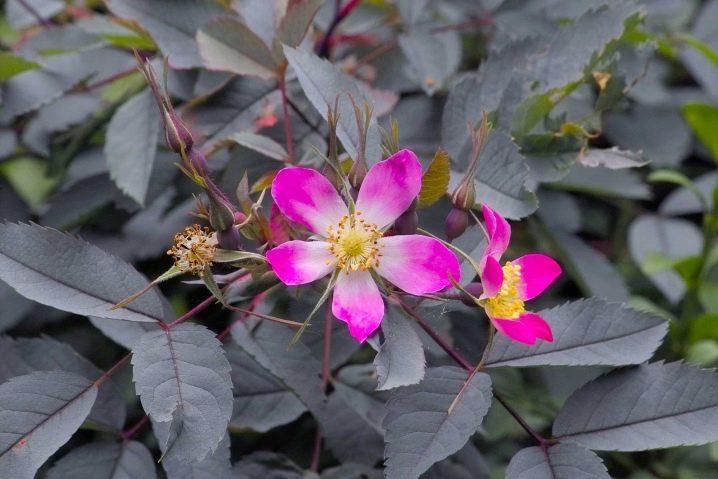
Canine
The semi-scientific name is Kanin's rose ("tracing paper" from Latin). There are two versions of the etymology: an invaluable shrub or used to heal dog bites. Height - from one and a half meters, the bark turns red on the sunny side, there are few thorns, the flowers do not smell, but they can reach 8 cm in diameter, be white and pink, single or collected in several pieces. This variety can be used for rootstock. He has fruits with a choleretic effect, used in pharmaceuticals.
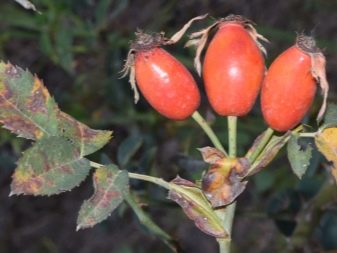
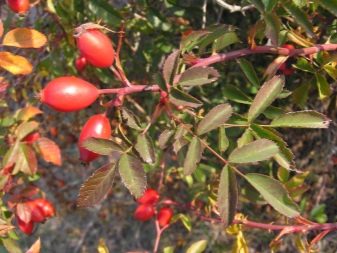
Stupid
The northern plant can be found in the Magadan region and Chukotka, with beautiful dark pink or red flowers up to 5 cm. The fruits are medicinal and edible, there is a strong similarity with the Daurian rose hips. It perfectly tolerates the neighborhood of trees and shrubs, shade and cold winters.

French
The second name is Gallic, known as the ancestor of a whole generation of decorative garden roses. With large, simple and lonely flowers, which can be semi-double and double. Distributed in Europe, Turkey and the Caucasus. It is widely used in medicine to make aromatic oil from petals. It has a laxative, anti-inflammatory effect, has a beneficial effect on the gastrointestinal tract. "Red Crimean Rose", "Pioneer", "Michurinka" - all these are selective derivatives of the French rose hips. The first is an industrial variety, capable of producing a significant amount of oil when diluted.
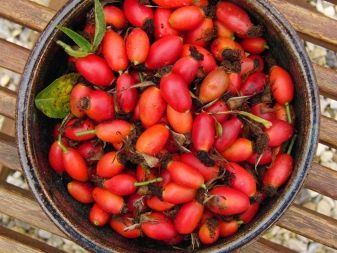
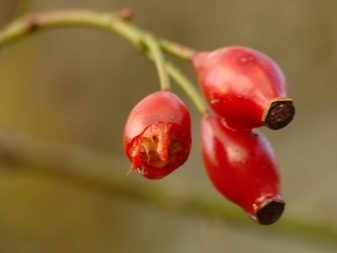































































The comment was sent successfully.